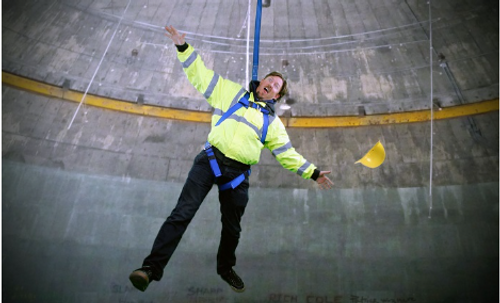Fall Protection Inspection Checklist
Fall protection equipment needs to be regularly inspected by a Competent Person according the specifications set forth in the ANSI Z359 protection codes if you want your Z359-rated equipment to be considered usable. Inspection is critical for all fall protection safety equipment, whether you intend to meet the highest standards in the country or not. To do this effectively, it's important to have a consistent process for the inspection. For each piece of equipment you have in your inventory, make sure to check carefully.
First check for any impact indicators. This can apply to harnesses as well as SRLs or lanyards. Is it deployed? Does it show signs of damage? Is there a secondary reserve lifeline that may have been deployed?
Next take a look at the D-rings. Are they cracked? Look closely for hairline fissures. Sometimes scrapes and scratches can hide deeper issues. Have the D-rings been affected by welding? Is there corrosion or are the rings bent or distorted? All of these issues mean the harness needs to be taken out of service and either destroyed or repaired. Another issue with D-rings is sharp edges. Nicks in the metal can create a built-in knife that can cut apart vital straps and stitches. Make sure any issues are taken care of before the harness returns to service.
Check the buckles next. Even high-end wind energy harnesses like the Exofit Tower Climbing Harness have buckles whose gates may be sticky or not close properly. Typically this is a cleaning issue but it should be rectified before returning the harness to service. Other issues with buckles and closures include cracking, corrosion, missing parts, excess grease or dirt, or sharp edges.
Harnesses, SRLs, and lanyards all have factory labels that list the manufacturer, weight capacity and other vital information. These labels need to be inspected along with the rest of the equipment. Make sure the information is legible and the pages or sticker hasn't been damaged beyond recognition. This always seems like a tickey tack requirement, but it's listed along with the other major check points and needs to be taken care of before inspection can be completed.
Plastic keepers need to be inspected. Lanyard leg organization keepers should be in place, undamaged. The harnesses are designed to keep trip falls to a minimum and these keepers are part of the way that is accomplished.
If you're dealing with SRLs or PFLs or personal fall limiters as some companies prefer to call them, you'll need to pay close attention to the wire rope. In addition to kinking and broken wires, you need to be on the lookout for separation of strands, birdcaging, abrasion, and corrosion of the wire. Terminals can come lose and the thimble needs to be closely looked at to make sure it's not coming off.
It's not unusual to have workers experience a fall and be embarrassed or simply mark it down as no big deal. If the harness and fall protection did their jobs, the worker might not even realize how much force was acted upon the materials. That's why it's so important to inspect equipment regularly.
Webbing, rope, and shock absorbers are even more susceptible to accidental damage. Burns, fraying, even mold and UV damage can deteriorate the effectiveness of fall protection. All of these factors need to be taken into account and each hazard checked for and dealt with if found.
If you have questions about how to check your equipment to be in compliance with Z359 or you have equipment that needs to be replaced, give our customer service team a ring. I'm sure we can get you checked out in a hurry.
Recent Posts
-
Promoting Safety: National Work Zone Awareness Week is April 15-19, 2024
Each year, the National Work Zone Awareness Week (NWZAW) places the spotlight on the importance o …Apr 11th 2024 -
Understanding 4 Gas Monitors: How They Work & Why They Are Important
In today’s increasingly dynamic industrial landscape, 4 gas monitors have emerged as critical com …Apr 8th 2024 -
April Showers Require Workers to Wear Hi-Vis Safety Rain Gear
While April showers bring May flowers, they also bring challenges, particularly for those working …Apr 1st 2024





